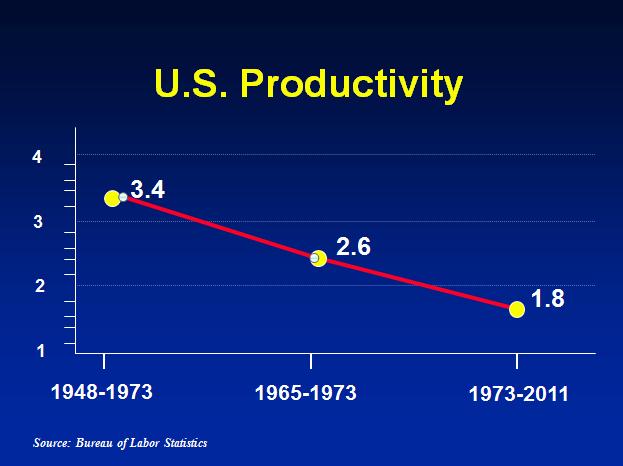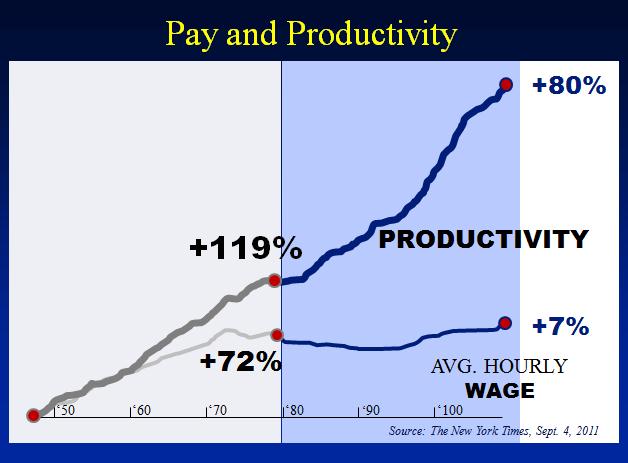Recently, Hedrick Smith published a New York Times editorial titled When Capitalists Cared. His discussion was a great review of American productivity starting in 1945, a time when productivity, pay, and standard of living were all increasing in the United States. Smith tracked wages and productivity through the next 65 years, and he illuminated some concerning facts in the discussion. Wages are declining while productivity is increasing.
My concern is the lack of attention to this problem. The numbers are alarming and they should be a warning, but politicians have ignored this discussion. I haven’t heard a word or sentence about productivity or efficiency from either Presidential campaign, yet this is an important issue that is hurting the nation’s standard of living. Many times politicians avoid talking about productivity because it raises concerns over layoffs and pay cuts. But the subject is much broader and much more serious.
Productivity is one of the strongest indicators of total economic growth. The chart below is from the Bureau of Labor Statistics. It shows the decline in the growth rate from non-farm productivity. There has been a steady, continuing decline since 1948 when growth was 3.4%. From 1965 to 1973 growth declined to 2.6%, and then continued its downward trend to 2011 where there was only 1.8% growth. There appears to be no tapering off in this pattern.

Although the Federal Reserve is stimulating growth, it is not increasing productivity, and, more importantly, it is not creating jobs. So while it increases demand, it is not necessarily increasing output. In the recent recession, the growth rate has fluctuated, seeing some of the lowest growth rates ever. Between 2007 and 2008 there was only 0.6% growth, and 0.7% in 2010-2011, the third- and fourth-lowest rates since 1948.
A bigger concern is how productivity relates to wages. Smith’s article noted that productivity is increasing in the corporate sector although wages have remained fairly stagnant. The next graph shows the unprecedented disparity between productivity and wage increases since 1950.

No wonder there is a cry about jobs and middle class income in the United States. I am not surprised at the shouts about inequality. Although politicians won’t address the issue, there needs to be an open discussion about the concerns raised here. If this problem isn’t addressed, it will eventually affect our competitiveness in the world. We must start talking about American productivity.
Let us know what you think. Do you agree?